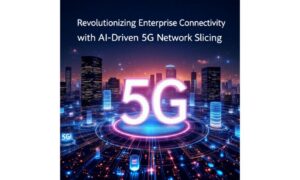Welcome to a world where every aspect of our lives is interconnected, and advanced connectivity reigns supreme. In this hyperconnected era, where the Internet of Things (IoT) has become an indispensable part of our daily routines, it’s time to take a deep dive into its profound impact. From smart homes controlling our appliances with a mere voice command to autonomous vehicles revolutionizing transportation as we know it – the rise of advanced connectivity has reshaped the way we live, work, and play. Join us on this captivating journey as we explore the countless possibilities that arise in this brave new world driven by innovation and seamless communication. Brace yourself for mind-boggling revelations as we unravel the mysteries behind this transformative force shaping our future. Get ready – because connectedness has never been more exhilarating.
Introduction: Define Advanced Connectivity and its Impact
Advanced connectivity, also known as 4.5G or 5G technology, is the next generation of wireless network technology. It promises to revolutionize mobile communications by providing faster data speeds, reduced latency, and enhanced capacity. This will enable a new wave of applications and services that are not possible with current 3G and 4G networks.
The impact of advanced connectivity will be felt across all industries. For example, in the automotive industry, 5G will enable vehicles to communicate with each other and with infrastructure in real time, paving the way for autonomous driving. In healthcare, 5G will support new telemedicine applications that allow doctors to remotely monitor patients and provide care at a distance. And in manufacturing, 5G will enable Industry 4.0 applications such as real-time monitoring of production lines and predictive maintenance.
Advanced connectivity will create new opportunities for businesses and consumers alike. It will make our world more connected and efficient, and open up new possibilities that we can only imagine today.
History of Advanced Connectivity
In a hyperconnected world, advanced connectivity is becoming increasingly important. Here’s a look at the history of advanced connectivity and its impact on the world today.
Advanced connectivity refers to the ability to connect devices and systems using high-speed, low-latency networks. This type of connectivity is necessary for applications such as real-time video streaming, gaming, and virtual reality.
The first iteration of advanced connectivity was introduced in the early 2000s with the advent of broadband internet. Broadband allowed for higher speeds and lower latency than dial-up internet, making it ideal for streaming video and audio content.
Since then, there have been several major developments in advanced connectivity. In 2009, 4G LTE was introduced, providing even higher speeds and lower latency than 3G networks. In 2014, commercial 5G services were launched in select markets, offering speeds up to 10 times faster than 4G LTE.
Today, advanced connectivity is available to billions of people around the world thanks to the proliferation of high-speed mobile networks. With 5G expected to launch globally in 2020, the future of advanced connectivity looks even more promising.
Benefits of Advanced Connectivity
In a hyperconnected world, advanced connectivity is key to success. By definition, advanced connectivity is “the ability of people or devices to connect to each other and share information seamlessly.” In a world where we are constantly connected to the internet and to each other, it’s important to have a reliable, high-speed connection. Here are some of the benefits of advanced connectivity:
1. Increased productivity: With a reliable connection, you can work more efficiently and get more done.
2. Enhanced communication: You can communicate with others more effectively and stay connected even when you’re on the go.
3. Improved customer service: With advanced connectivity, you can provide better customer service by responding to inquiries quickly and efficiently.
4. Greater flexibility: A good connection allows you to work from anywhere, at any time.
5. More competitive edge: In a global market, advanced connectivity gives you the ability to connect with customers and clients around the world instantaneously.
Challenges of Advanced Connectivity
Though often thought of as a solution to many of the world’s problems, advanced connectivity can actually present a number of challenges. For one, hyperconnectivity can lead to information overload, as people are bombarded with an ever-increasing amount of data. This can make it difficult for people to focus and pay attention to what’s important.
In addition, hyperconnectivity can also lead to a sense of isolation, as people increasingly interact with technology rather than with each other. This can have a harmful effect on mental health, leading to increased anxiety and depression.
Hyperconnectivity can also create security risks, as hackers can target connected devices in order to access sensitive information. This is a particularly serious concern in the case of critical infrastructure, such as power grids and water treatment facilities.
While advanced connectivity has the potential to improve our lives in many ways, it’s important to be aware of the challenges it poses so that we can address them effectively.
Examples of Real World Uses for Advanced Connectivity
Advanced connectivity is transforming the way we interact with the world around us. Here are just a few examples of how it is being used in the real world:
-Smart homes and buildings are using advanced connectivity to increase energy efficiency and provide occupants with a better experience.
-Autonomous vehicles are relying on advanced connectivity to communicate with each other and make split-second decisions.
-The industrial Internet of Things is connecting factories and machines to optimize production processes.
-Smart cities are using advanced connectivity to manage traffic, improve public safety, and provide citizens with better services.
Security Issues with Advanced Connectivity
It’s no secret that the world is becoming increasingly connected. Every day, we see new technologies and devices that enable us to connect with others in ways that were once impossible. But as our world becomes more connected, it also becomes more vulnerable to security threats.
There are a number of security issues that come with advanced connectivity. One of the most serious is data breaches. When sensitive information is stored on interconnected devices, it can be accessed by unauthorized users if those devices are not properly secured. This can lead to identity theft, financial fraud, and other malicious activities.
Another security issue is malware. Malicious software can infect interconnected devices and use them to spread viruses or engage in other destructive activities. This can cause serious damage to individuals, businesses, and critical infrastructure.
Advanced connectivity can also create opportunities for cyber criminals to carrying out denial-of-service attacks. These attacks involve flooding a victim’s system with traffic until it crashes, making it unavailable to legitimate users. Such attacks can disable websites, email servers, and other online services.
Advanced connectivity gives rise to new types of social engineering attacks. These attacks exploit the trust that people have in their connections to carry out scams or commit fraud. For example, an attacker might pose as a friend or trusted contact in order to trick someone into revealing confidential information or clicking on a malicious link.
As you can see, there are a number of security issues that come with advanced connectivity. It’s important to stay on top of these threats and take steps to protect yourself and your data. Doing so can help ensure that you stay safe online.
Conclusion: Implications of the Rise of Advanced Connectivity
In a hyperconnected world, the rise of advanced connectivity is inevitable. However, its implications are not yet fully understood. This article has explored some of the potential implications of the rise of advanced connectivity, including:
1. The impact on businesses and economies: With advanced connectivity, businesses will be able to operate more efficiently and effectively. This could lead to increased productivity and economic growth. Additionally, businesses will be able to tap into new markets and create new opportunities for themselves.
2. The impact on society: Advanced connectivity will enable people to connect with each other like never before. This could have a profound impact on social interactions and relationships. Additionally, it could lead to the development of new communities and networks.
3. The impact on individuals: Individuals will be able to benefit from advanced connectivity in many ways. For example, they will be able to access information and services more easily. Additionally, they will be able to stay connected with friends and family members who are far away.
The implications of the rise of advanced connectivity are far-reaching and complex. While it is clear that there will be many benefits, there are also potential risks that need to be considered. As we move forward into a hyperconnected world, it is important to continue to monitor the effects of advanced connectivity and adapt accordingly.



































